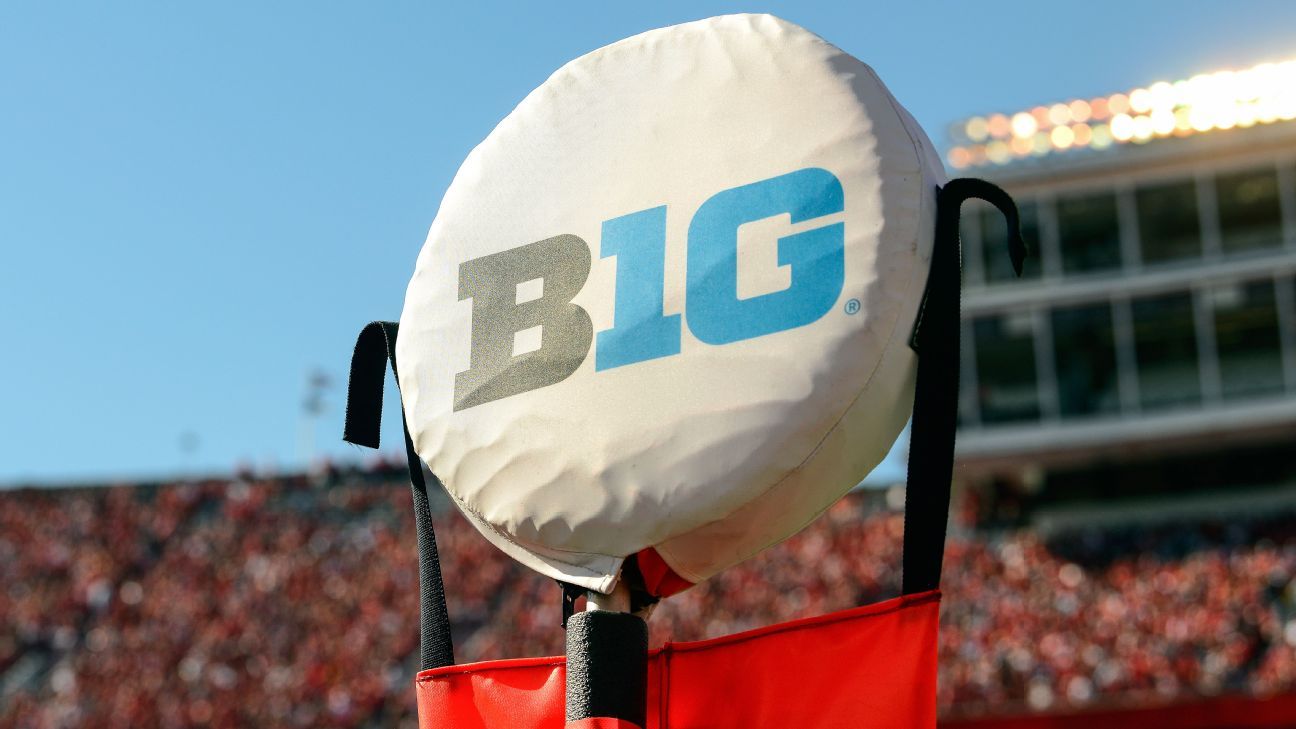Why the Big Ten ditched divisions and protected 11 games to make room for USC and UCLA

The Big Ten has unveiled its football schedule model for the 2024 and 2025 seasons when the league expands to 16 members with the arrivals of UCLA and USC.
All hail Flex Protect Plus!
The league’s new model features no divisions and 11 protected annual games that are not evenly spread between the teams. The Big Ten focused on preserving the games its schools cared about most, from the obvious (Ohio State-Michigan, USC-UCLA, Michigan-Michigan State, Indiana-Purdue) to the historic (Minnesota-Wisconsin) to recent regional rivalries (Iowa-Nebraska) to matchups for odd trophies (Illinois-Purdue, where the Purdue Cannon is at stake).
Every Big Ten matchup will take place twice in a four-year span, once at each team’s home site. USC and UCLA will face every Big Ten team at least once before the end of 2025, and every Big Ten team will play once in Los Angeles in the same span.
Flexibility is at the core of the Big Ten’s approach, and the league wants to — get this, SEC — play each other more often as both the membership and the CFP expand in 2024. But there are also some drawbacks and items to debate.
ESPN’s Bill Connelly, Adam Rittenberg, Paolo Uggetti and Tom VanHaaren break down what the Big Ten’s announcement means.
Connelly: The primary effect is simply that the two best teams will actually play for the conference title. Looking at my SP+ rankings, the top two teams in the conference were East division teams eight of the past 10 years, and the East boasted the top three in four years during that span. It was certainly fun writing about unique division title runs — Northwestern’s in 2018 and 2020, for instance, and Purdue’s (nearly Illinois’) in 2022 — but only three of the past 11 Big Ten Championships have been decided by single digits, and Michigan has won the past two by a combined 85-25. Division imbalance isn’t the only thing that produces title-game blowouts, but it doesn’t help.
On the downside, you get messy new issues when it comes to tiebreakers and the odd idea of, say, Michigan and Ohio State playing each other in back-to-back weeks. But it’s hard to complain too much about anything that produces better conference championship matchups and results and everyone in the conference actually playing each other semiregularly.
Get your favorite live sports, stories and originals with ESPN+, Disney+ and Hulu. Upgrade to a Disney Bundle plan and start streaming something for everyone today!
Connelly: In the end, there’s nothing the conference could do to make the travel situation good for USC and UCLA. That’s just the hazard of bringing in two schools that are at least two time zones away from the other 14 schools. The flex rivalry approach is fun; I was good with creating three permanent rivalries for everyone and rotating six other opponents from year to year, but one of the downsides of that was creating random permanent matchups like, say, UCLA-Nebraska or something. This makes sure that no one from the east/midwest is traveling out west more than anyone else.
Uggetti: All right, I’ve crunched the numbers and USC’s road slate in its debut Big Ten season will feature nearly 20,000 miles of travel with all of its road games outside of UCLA requiring a 2,000-plus mile trek each leg of the trip. It’s not ideal, to say the least, but for both the Trojans and the Bruins, this is a small-ish price to pay for what they’re getting financially by joining the conference. It’s also important to remember that while travel for the football teams will be brutal during the season, the nonrevenue sports, which have to travel east as well, will be just as affected, if not more.
Rittenberg: I’m a bit surprised that USC has to visit both Penn State and Maryland in 2024, and both Rutgers and Ohio State in 2025. Those are some long trips. But ultimately we need to see where the games fall in the actual schedules. My sense is USC and UCLA often will get open dates either before or after their longest road trips. They won’t be traveling often — or at all — for midweek games, like they do in the Pac-12. Rutgers seemingly gets the toughest east-to-west travel schedule in 2025, as the Scarlet Knights visit both UCLA and Nebraska.
Connelly: We obviously don’t know what specific schedules would have looked like and how tiebreakers might have come into effect, but based purely on my SP+ rankings, we’d have gotten Ohio State vs. Michigan in 2018, Ohio State vs. Penn State in 2019, Ohio State vs. Iowa in the abbreviated 2020, and Ohio State vs. Michigan again in 2021 and 2022. That none of those matchups actually happened in real life certainly reinforces how the divisional structure held this conference back, but the presence of three extra Buckeyes-Wolverines games is certainly noteworthy.